The Daniel K. Inouye Solar Telescope shows some stunning detail on the Sun, including sunspots, fibrils, granules, and other solar textures.
The National Science Foundation's Daniel K. Inouye Solar Telescope has returned some stunning close-up images of the Sun, including sunspots, fibriles, granules, and all sorts of other solar textures. The eight images below, taken by the Visible-Broadband Imager, are just a preview for the research being done with the new facility.
The Inouye solar telescope, part of Haleakalā Observatory on Maui, Hawai'i, just completed its first year of commissioning science observations in February. During this period, scientists test out and calibrate the instruments while also conducting valuable science. It was operating with only three of its five instruments, though; the fourth was only recently installed, and the fifth should be integrated next year.
The images below capture details in the visible surface of the Sun, known as the photosphere, as well as the hotter chromosphere above it. Convection cells in the boiling plasma — in which hot plasma bubbles up, cools, and sinks again — are visible on the visible surface as granules. Dark strings called fibrils come from magnetic fields that accumulate like a bunches of uncooked spaghetti in the chromosphere.
Sunspots are also visible, with dark centers known as umbras and surrounding brighter areas called penumbras. In sunspots, the magnetic field is strong enough to inhibit gas motions so that the gas actually cools, which is why it appears darker (even though sunspots are still quite hot). Sometimes, almost-spots form, with magnetic fields not quite strong enough to calm gaseous motions; these are called pores.
Fine Structure on the Sun
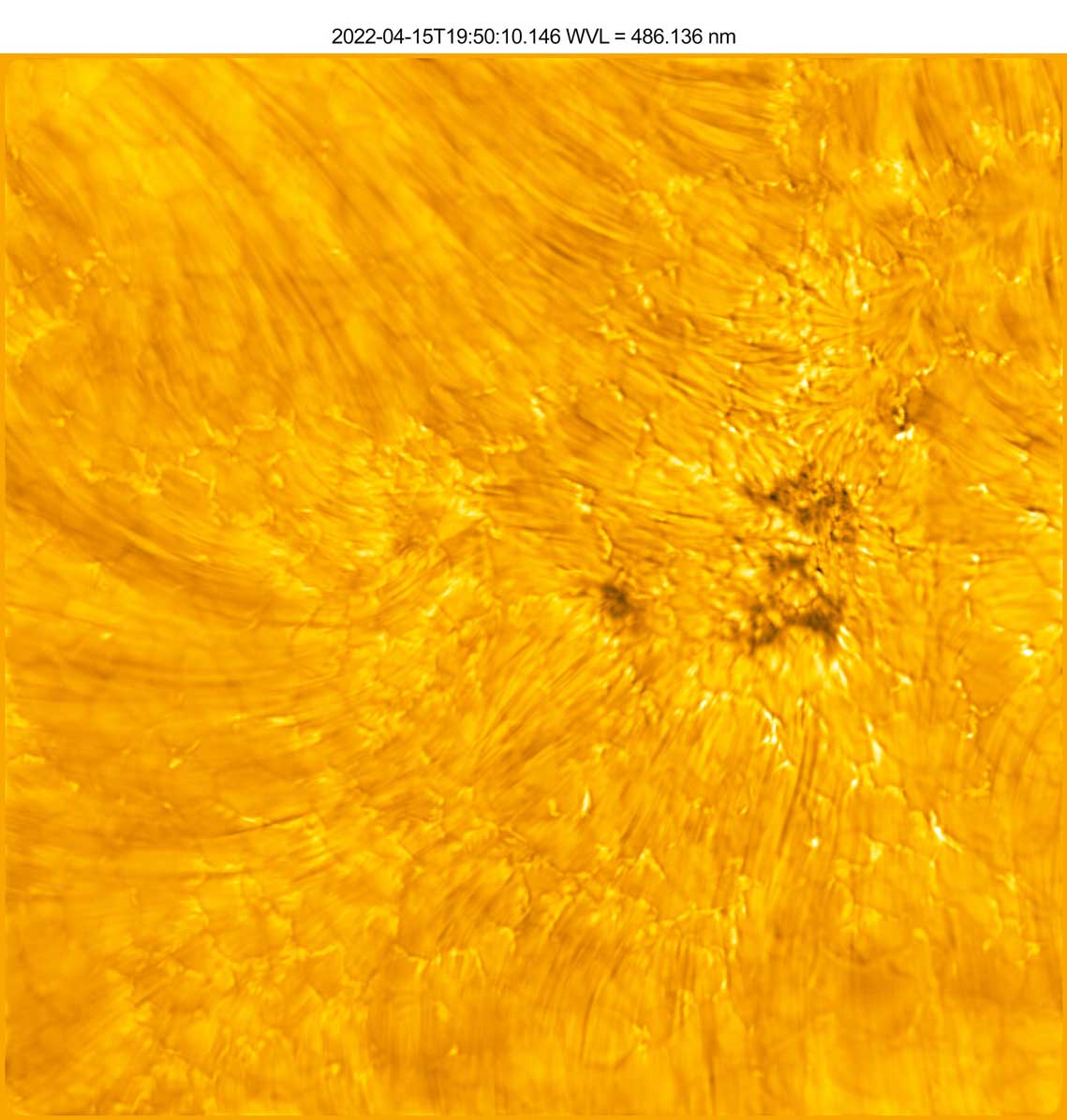
NSF / AURA / NSO; Image Processing: Friedrich Wöger(NSO), Catherine Fischer (NSO) Science Credit: Juan Martínez-Sykora (Bay Area Environmental Research Institute)
Fibrils
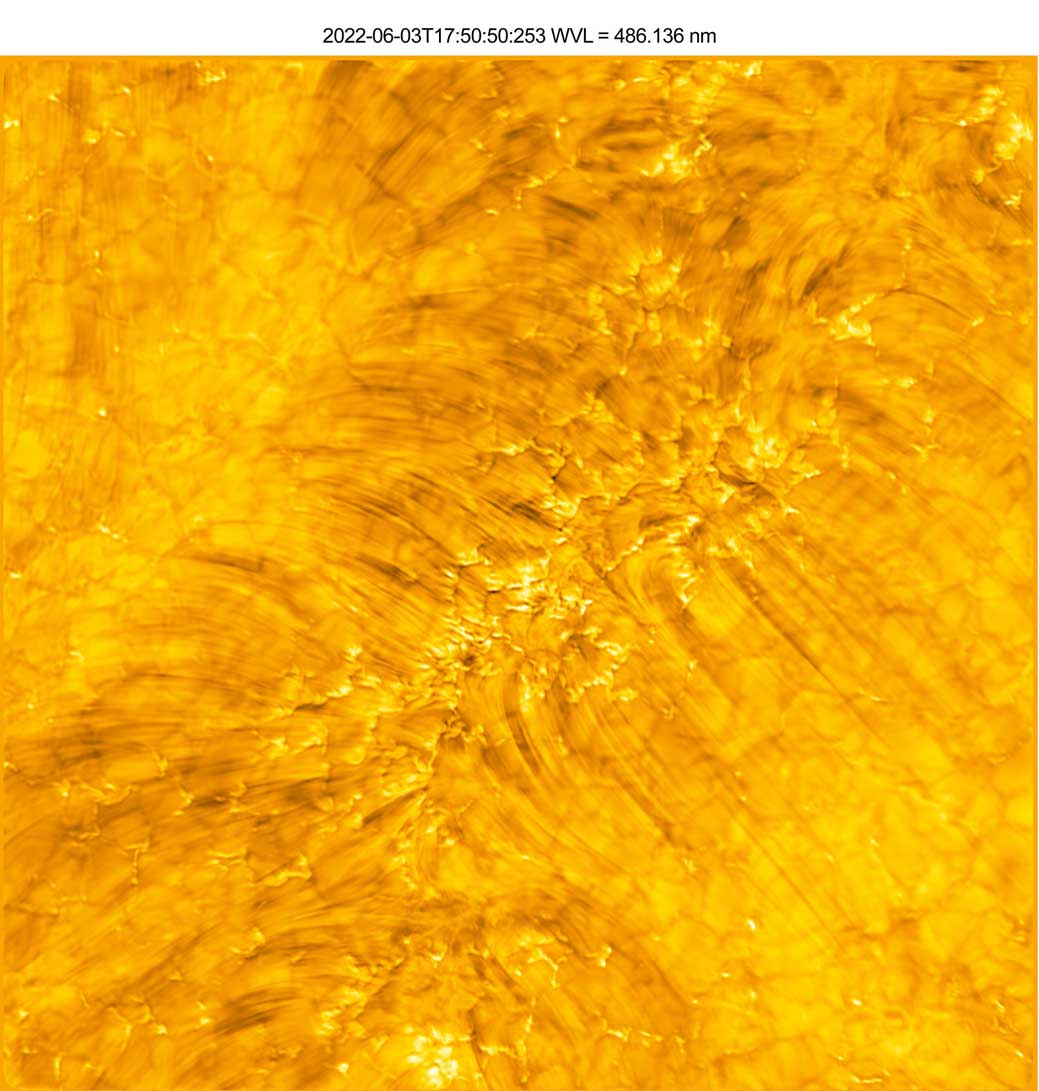
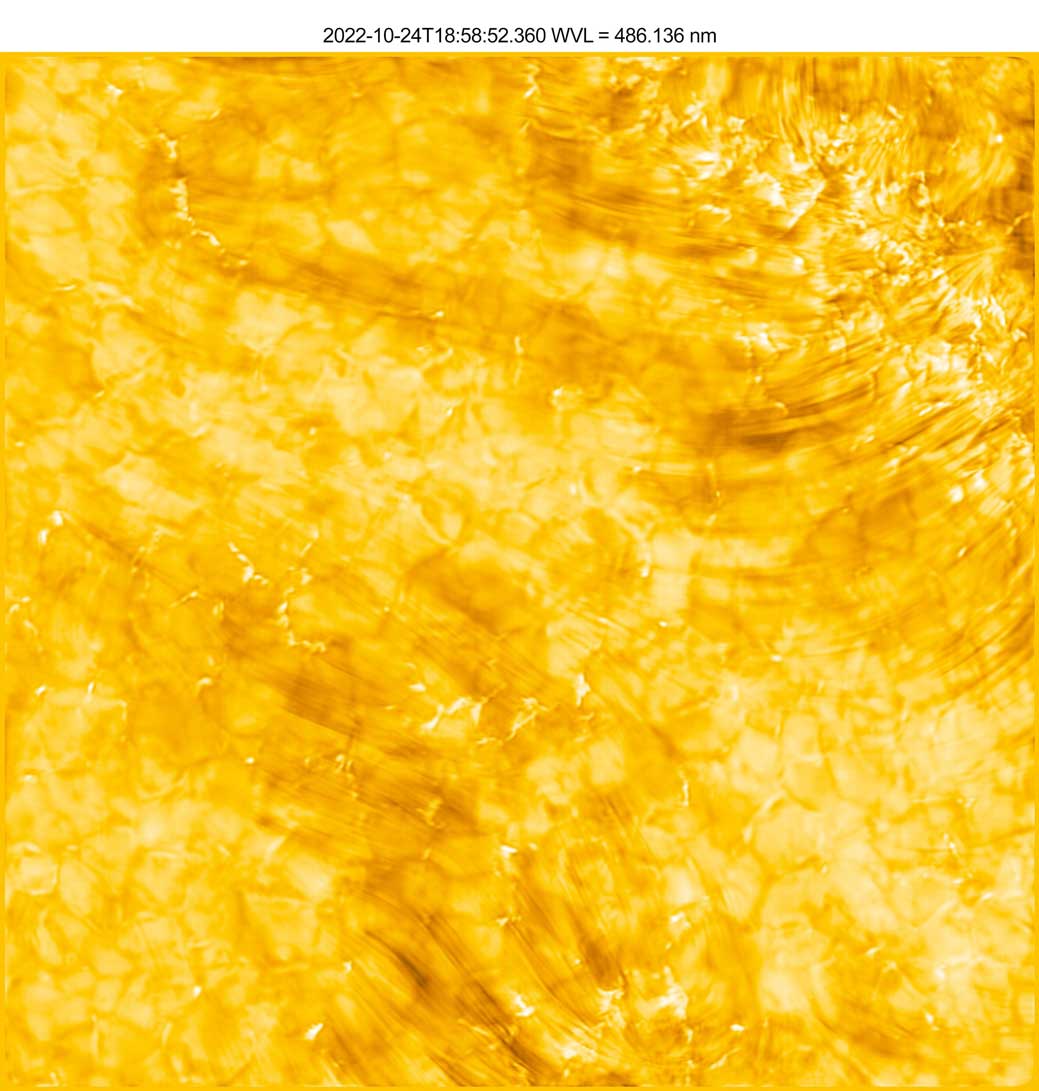
NSF / AURA / NSO; Image processing: Friedrich Wöger(NSO), Catherine Fischer (NSO) Science Credit: Public DDT Data
Granules
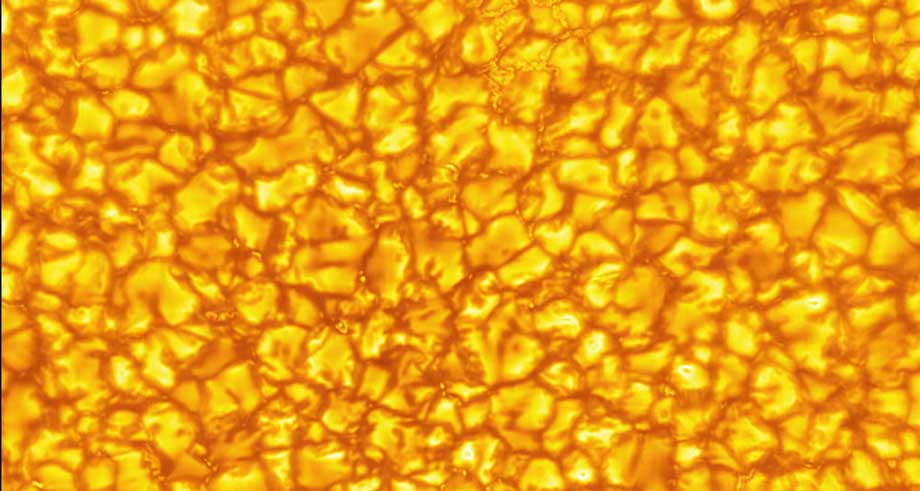
NSF / AURA / NSO; Image processing: Friedrich Wöger(NSO), Catherine Fischer (NSO)
Sunspots
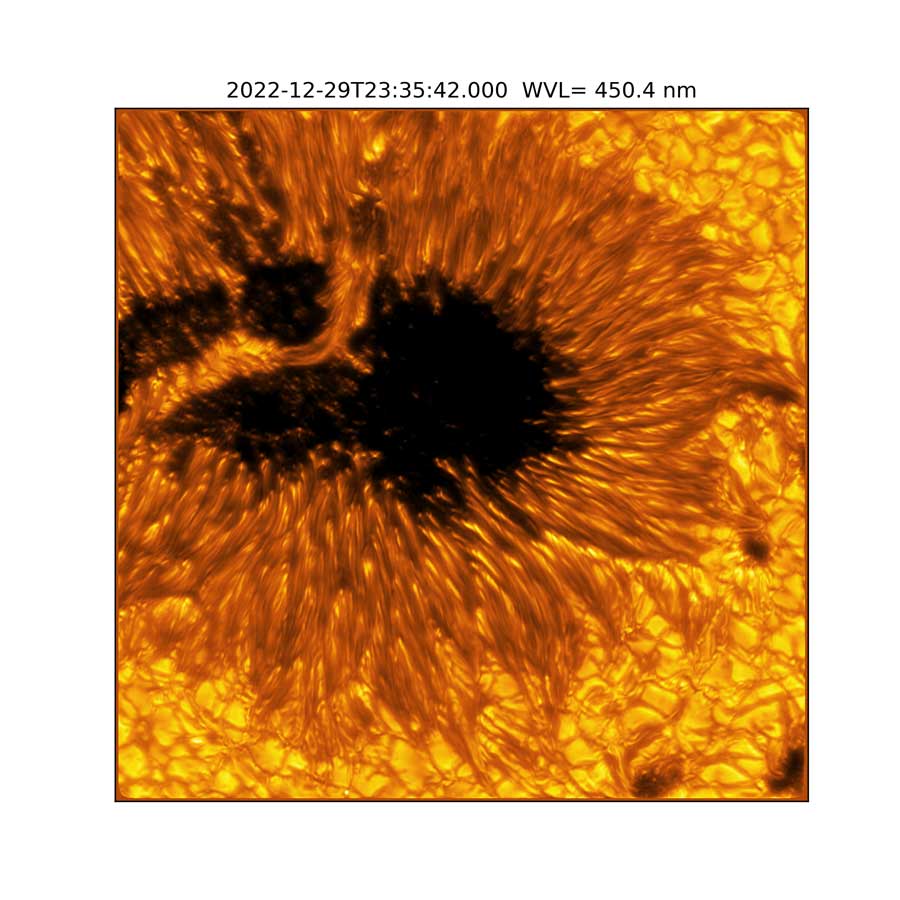
NSF / AURA / NSO; Image processing: Friedrich Wöger(NSO), Catherine Fischer (NSO) Science Credit: Philip Lindner at Leibniz-Institut für Sonnenphysik (KIS)
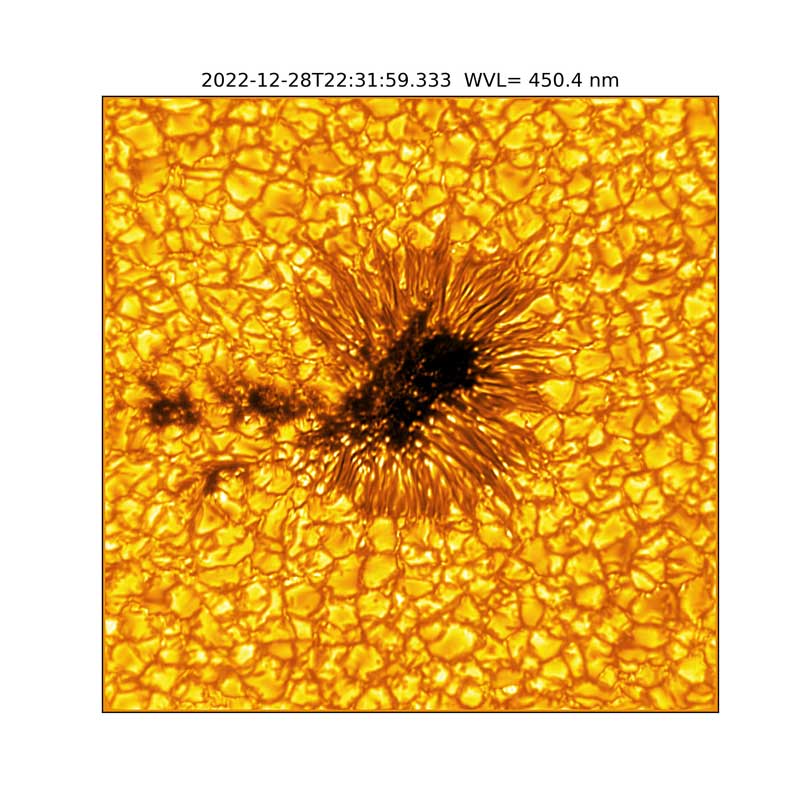
NSF / AURA / NSO; Image processing: Friedrich Wöger(NSO), Catherine Fischer (NSO) Science Credit: Jaime de la Cruz Rodriguez (Stockholm University)
 5
5









Comments
dwhightowe
May 25, 2023 at 12:09 pm
Thank you for including the wavelength for most of these images. Wavelength is missing from the granules image. Knowing the wavelength of this image would help with understanding the difference between its depiction and the ones before it.
Also, it is always good to include an idication of the scale in astro images. A one arcsec bar is needed here.
Also helpful, but rarely seen in published astro images, is a depiction of the entire acquired image versus the cropped image. We need to see a representation of the entire field of view of the instrument, even if it is just a gray box with a thumbnail of the published crop inside it.
Lastly, no mention of the location of the telescope is made in your article. "at Haleakala on Maui" would have added only four words but would have helped the readers who don't already know this. The detail about instrument commissioning was nice.
You must be logged in to post a comment.
David
May 27, 2023 at 1:53 pm
These are excellent comments. The full image and some indication of scale would be really helpful. Also, I had to Google the location of the telescope to make sure my guess was correct.
You must be logged in to post a comment.
Monica YoungPost Author
May 30, 2023 at 10:11 am
Thanks for the catch, dwhightowe, I have updated the location of the telescope. The scale of the images was not provided by the observatory, but I am looking into it and will update when I can.
You must be logged in to post a comment.
Monica YoungPost Author
May 31, 2023 at 9:03 am
Apologies for the delay, the scale is now listed in the caption for each image. Each image captures an area that's 30,720 km on a side.
You must be logged in to post a comment.
Rod
May 30, 2023 at 4:49 pm
Some spectacular solar images here. I poste my solar observation for the morning of 26-May, here https://skyandtelescope.org/astronomy-news/observing-news/this-weeks-sky-at-a-glance-may-26-june-4/
Used my 90-mm refractor telescope with glass white light solar filter. I still enjoy viewing the Sun at times. H-alpha filters and solar telescopes show better views, but I still get some nice sights 🙂
You must be logged in to post a comment.
You must be logged in to post a comment.